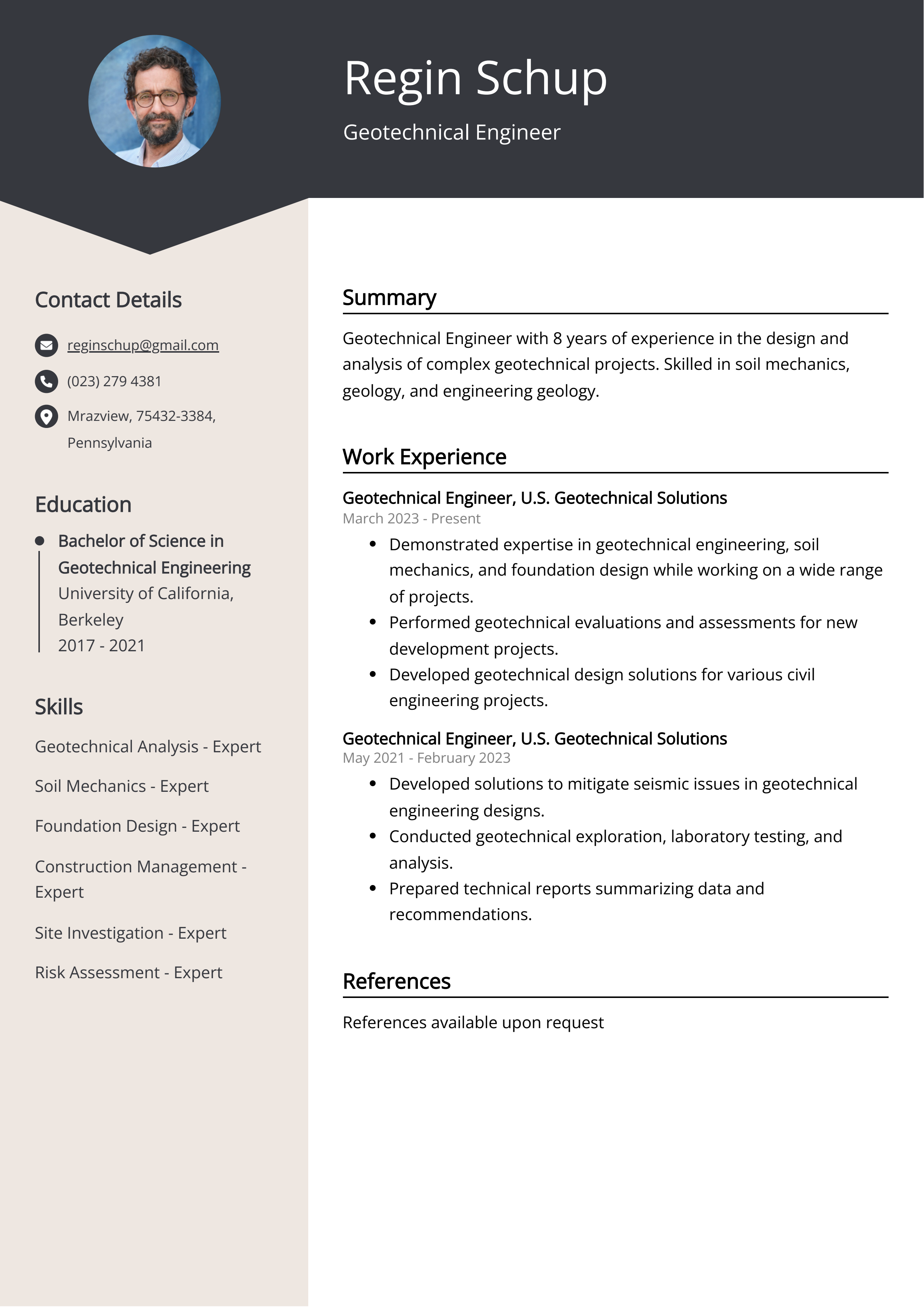The smart Trick of Geotheta That Nobody is Talking About
The smart Trick of Geotheta That Nobody is Talking About
Blog Article
The 45-Second Trick For Geotheta
Table of ContentsGeotheta - An Overview9 Easy Facts About Geotheta DescribedOur Geotheta PDFsGeotheta Can Be Fun For Everyone
They work together with civil engineers, architectural engineers, engineers, and various other experts to incorporate geotechnical factors to consider into the overall job layout and construction process. This calls for efficient synergy, control, and communication to make sure that the geotechnical elements align with the project purposes and satisfy regulatory needs.Mining & Materials Design: Concepts of boring, penetration rates, and elements influencing the selection of boring technique. Attributes of dynamites, firing systems and blast patterns. Blowing up methods in surface and below ground workings. Unique blowing up methods at excavation borders. Resonance and noise control. Mechanical and constant techniques to fragmentation, including longwall shearing and fullface boring.
Modelling of fragment and bit dimension distributions; comminution as a transfer function. Comminution technology: crushing, grinding, dimension category. Integrated analysis of fragmentation and comminution operations. Used by: Mining & Materials Engineering.
See This Report about Geotheta
Bachelor's degree programs in civil, geotechnical, geological, and environmental engineering generally last 4 years and consist of basic education courses in English, social scientific research, and the liberal arts, along with programs in innovative maths, architectural geology, and fluid mineralogy. (https://trello.com/u/geotheta)
Geotechnical engineering entails the evaluation of the soil and rock conditions at a specific site, and their implications for the advancement of that website. As many structures depend on the ground for assistance, it lacks surprise that an in-depth understanding of the ground conditions, and the viability of foundation systems, are vital to the lasting stability and performance of the structure or framework.
Specialising in the examination of geological developments and ground practices, geotechnical engineers do clinical examinations and screening to comprehend the influence these geological developments may have on the design and building and construction of building, civil and facilities tasks. This proficiency is critical for the design and building of structures, roads, tunnels, dams, bridges, and water and sewer systems.
The geotechnical team at Douglas Partners regularly speak with engineers, layout designers, designers, and building contractors to make referrals on style and development propositions to make certain that the constructed structures are accordingly made for the ground conditions. The design of footing systems requires to consider the weight of the structure, the capacity of the ground to support that weight with each other with activity tolerances and reliable building.
Geotheta Things To Know Before You Get This
This task is substantially streamlined by the use our Douglas Map geospatial system which makes this details conveniently obtainable in an easy to make use of web browser interface. A geotechnical engineer will certainly guide the boring of boreholes and test pits to collect dirt and various other examples, and likewise examine surface area functions and ground direct exposures to form a geotechnical design of the subsurface problems.
Depending upon the task type and ground problems encountered, lab screening may among various other points analyze toughness, compressibility, sensitivity and/or permeability of dirt and rock examples. After this data is accumulated and collated, the results are utilized for a geotechnical model of the site, which is usually offered as sections across the site.

A geotechnical examination by nature can just evaluate the ground conditions at the locations pierced or dug deep into. Natural variations in dirt and rock conditions can occur throughout a site and between test areas. It is for that reason great method that the geotechnical designer be kept throughout building of the job to offer on-site verification that the ground conditions come across are consistent with the expectations and recommendations given in the geotechnical investigation record.
Geotheta for Beginners
Geotechnical designers utilize their in-depth expertise of dirt and rock to analyze risk and address troubles on varied framework projectsGeotechnical engineering is a specialist branch of civil engineering which checks out the practices of earth products and the application of dirt and rock auto mechanics. Engineer of Record. As a geotechnical engineer, you will certainly evaluate the physical, mechanical and chemical homes of soil and rock in order to develop structures, retaining structures and earthworks
Geotechnical engineering is closely linked to and overlaps with, both engineering geology and ground engineering - https://pxhere.com/en/photographer/4325446. It's feasible to specialise in geotechnics or benefit a geotechnical firm yet be called an engineering rock hound or a ground engineer. As a geotechnical engineer, you'll require to: build and preserve relationships with customers and various other specialists associated with the website, throughout each projectmaintain safety criteria on site bear in mind expense ramifications when you make recommendationsstudy geological maps and airborne pictures from an array of sources and from different time periodsexamine building and construction prepares to see exactly how possible they are based on your understanding of the siteinvestigate risks or geological dangers for the sitesearch for environmentally delicate attributes, such as land fill start to create factual and interpretive ground modelsplan area investigationsdrill and evaluate samples of bedrock, dirt, groundwater and added products manage various other experts on sitesolve technological problems as they emerge, such as unexpected structures at drill sitesmonitor conditions throughout and after building and construction to ensure structures are steady in the brief and long termadding data accumulated on site to your initial researchcreating geotechnical computations, drawings, and 2 or three-dimensional computer versions translating the datamaking recommendations about the recommended use of the website

Report this page